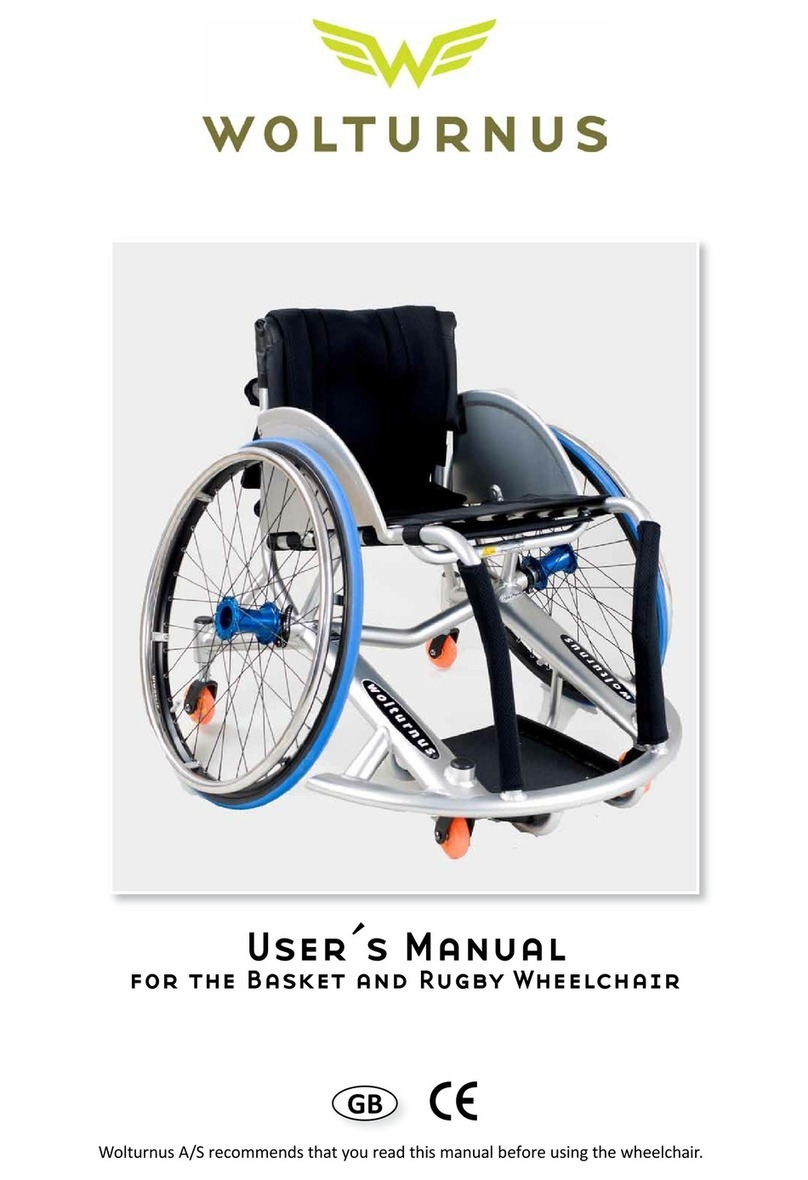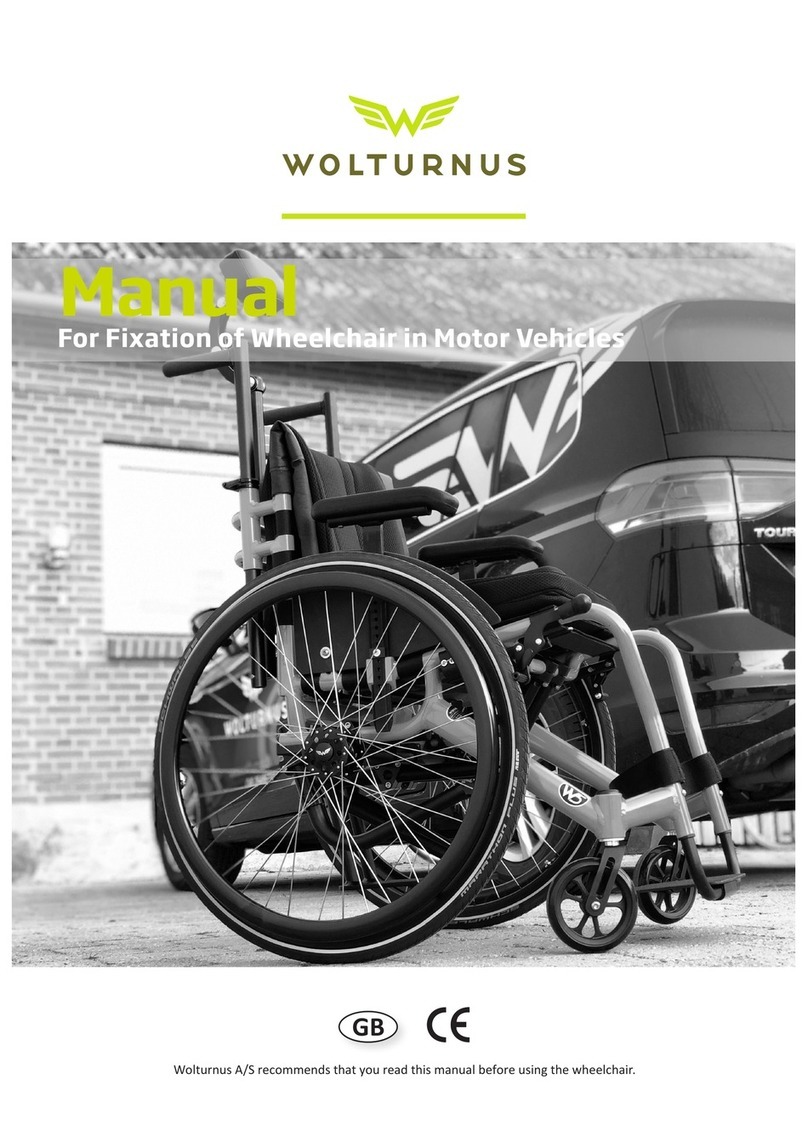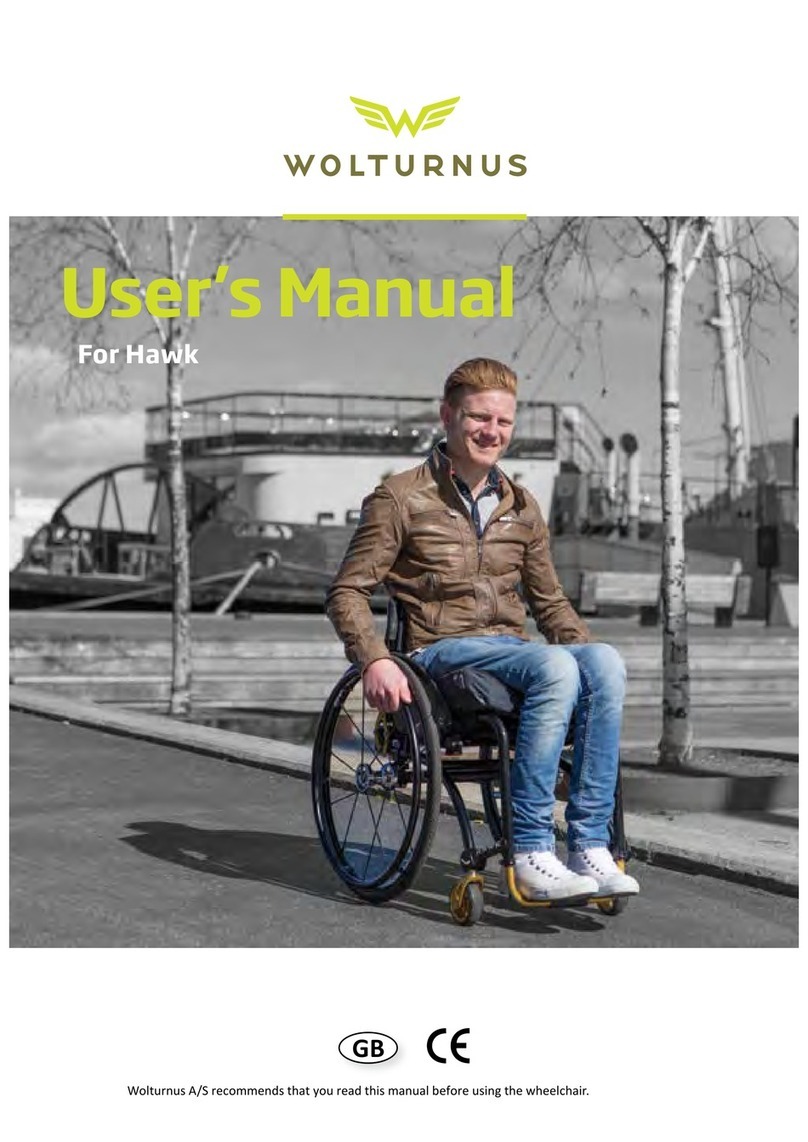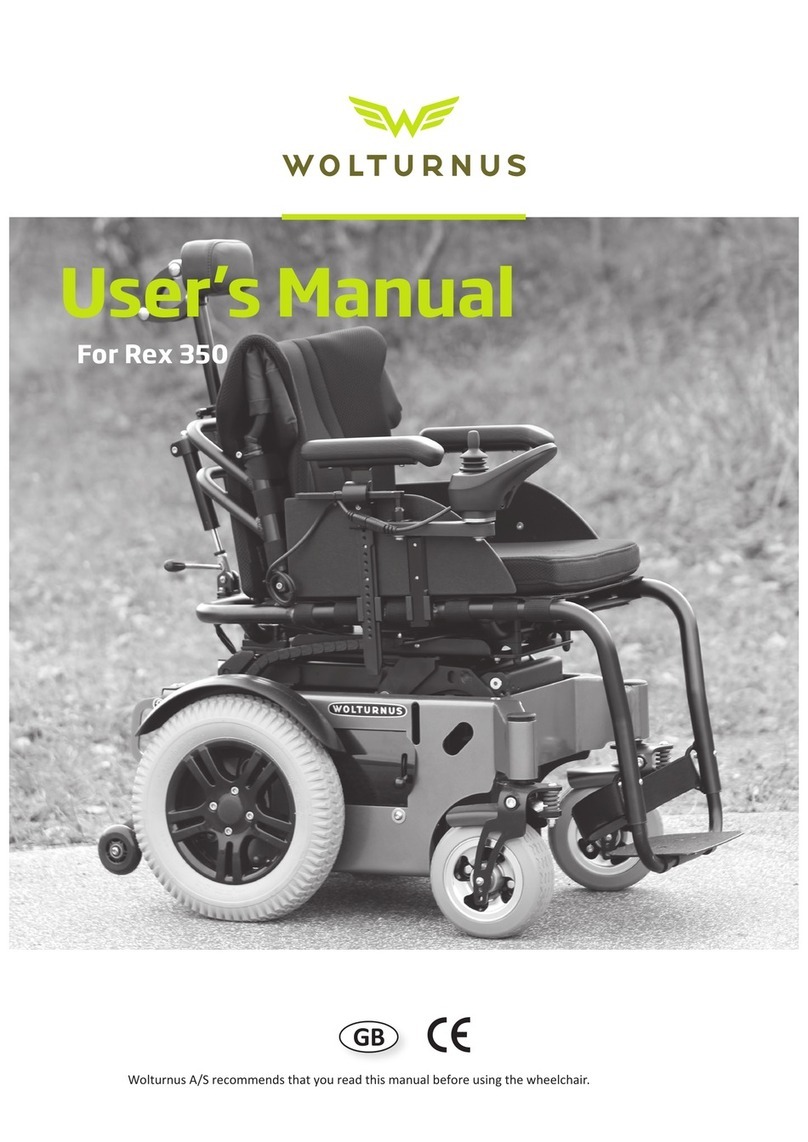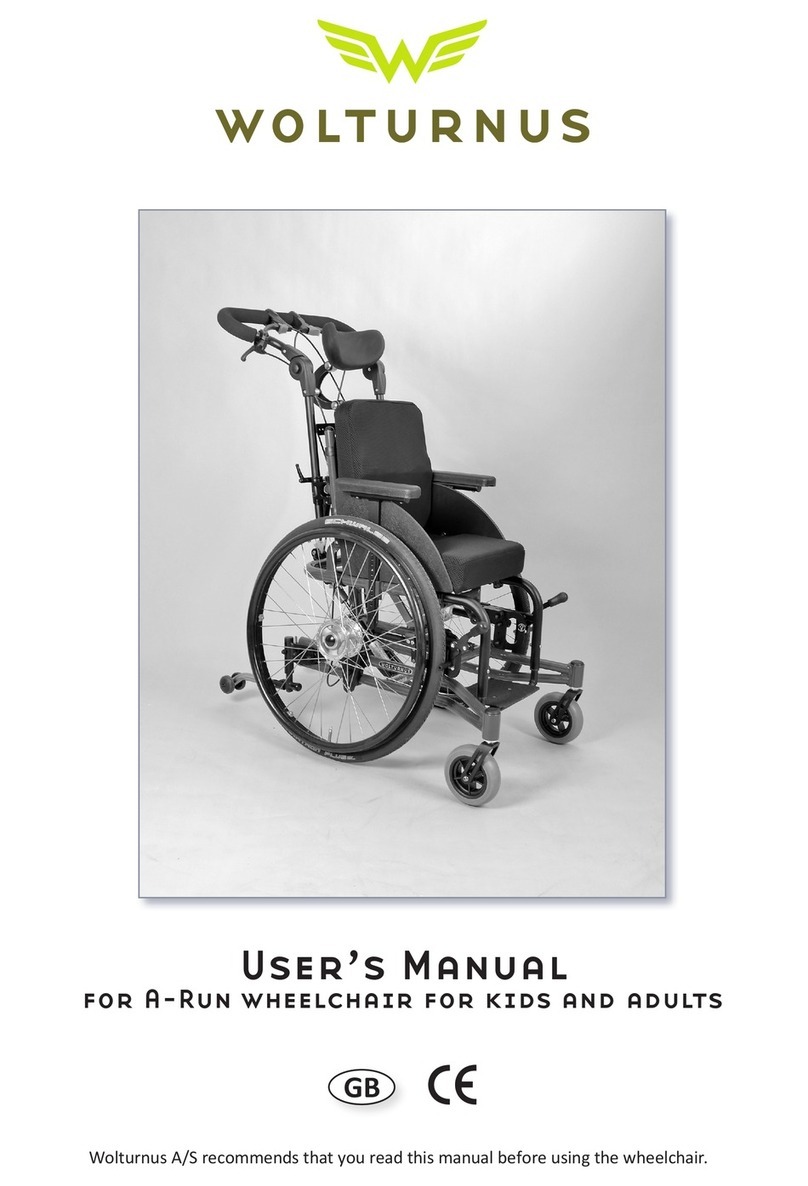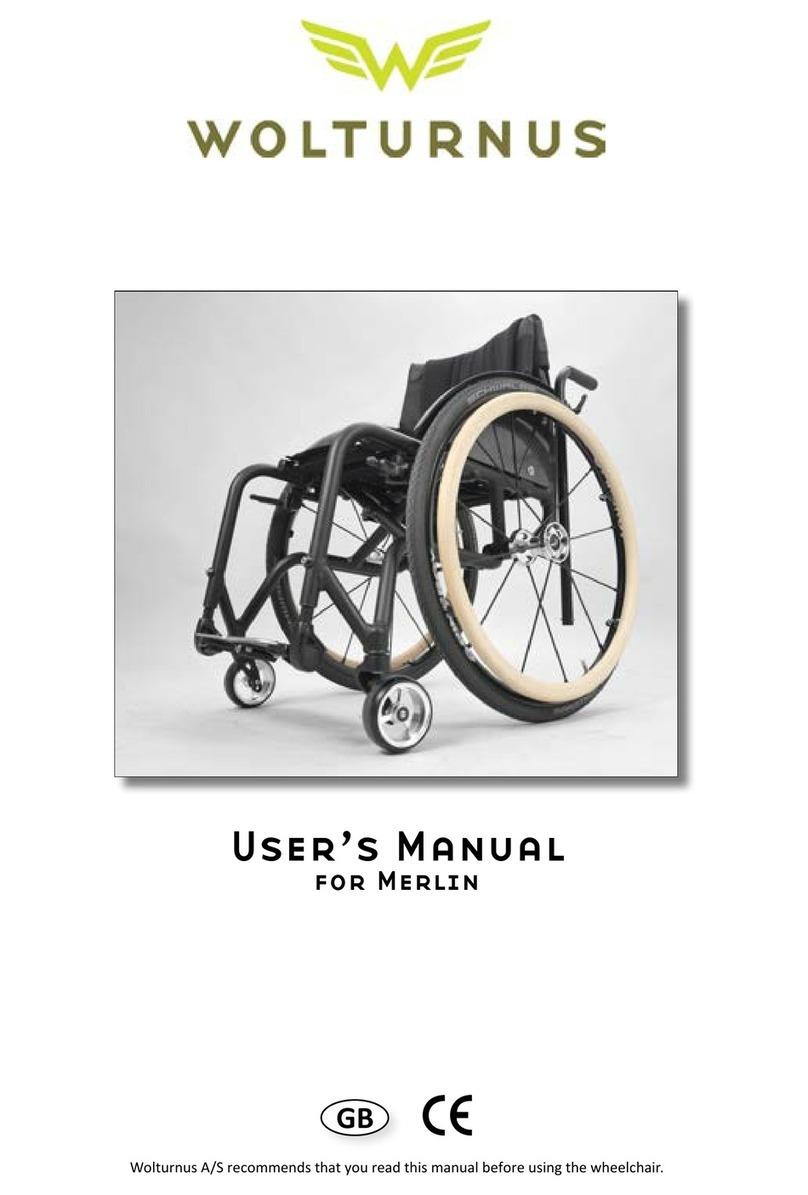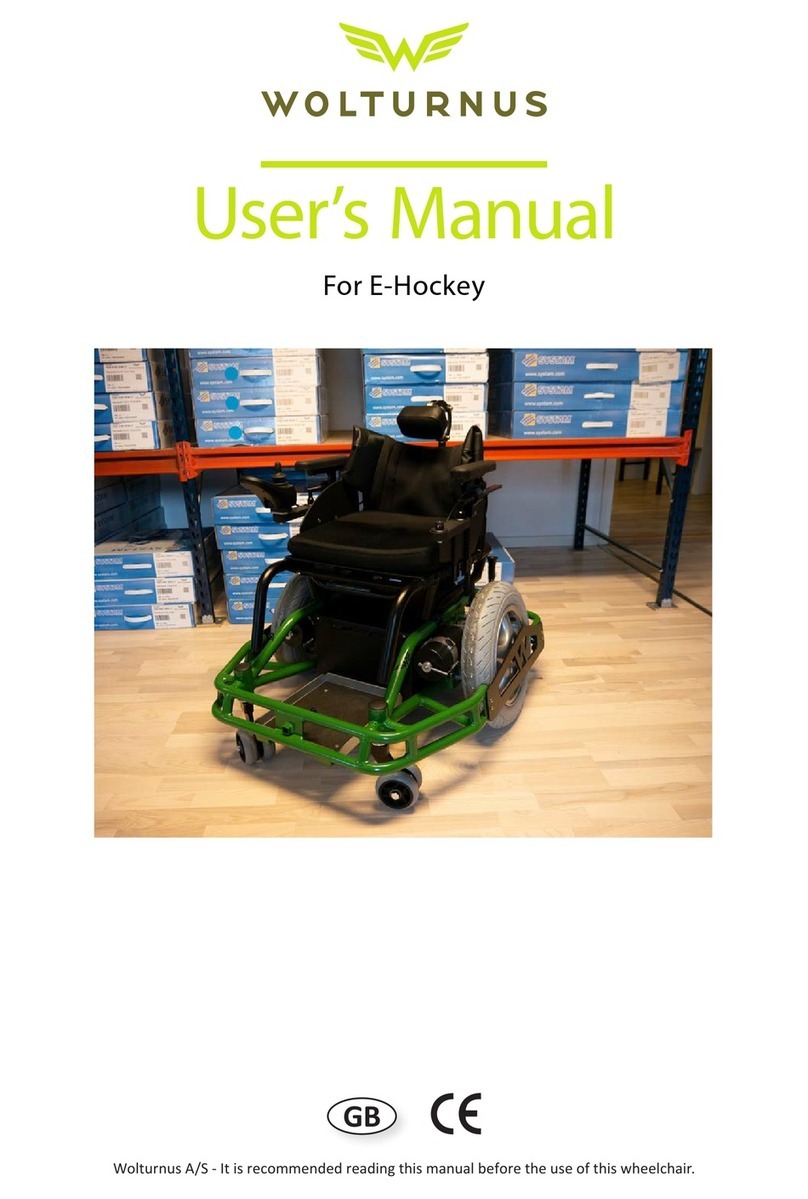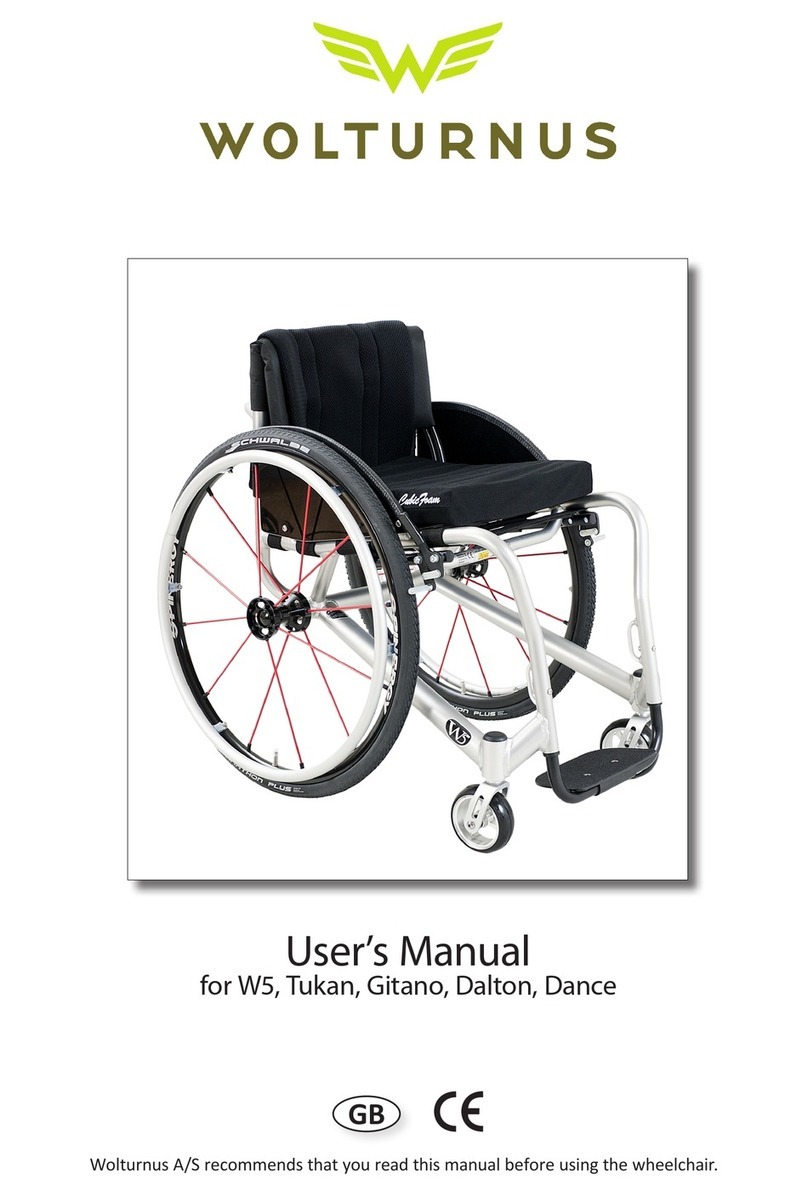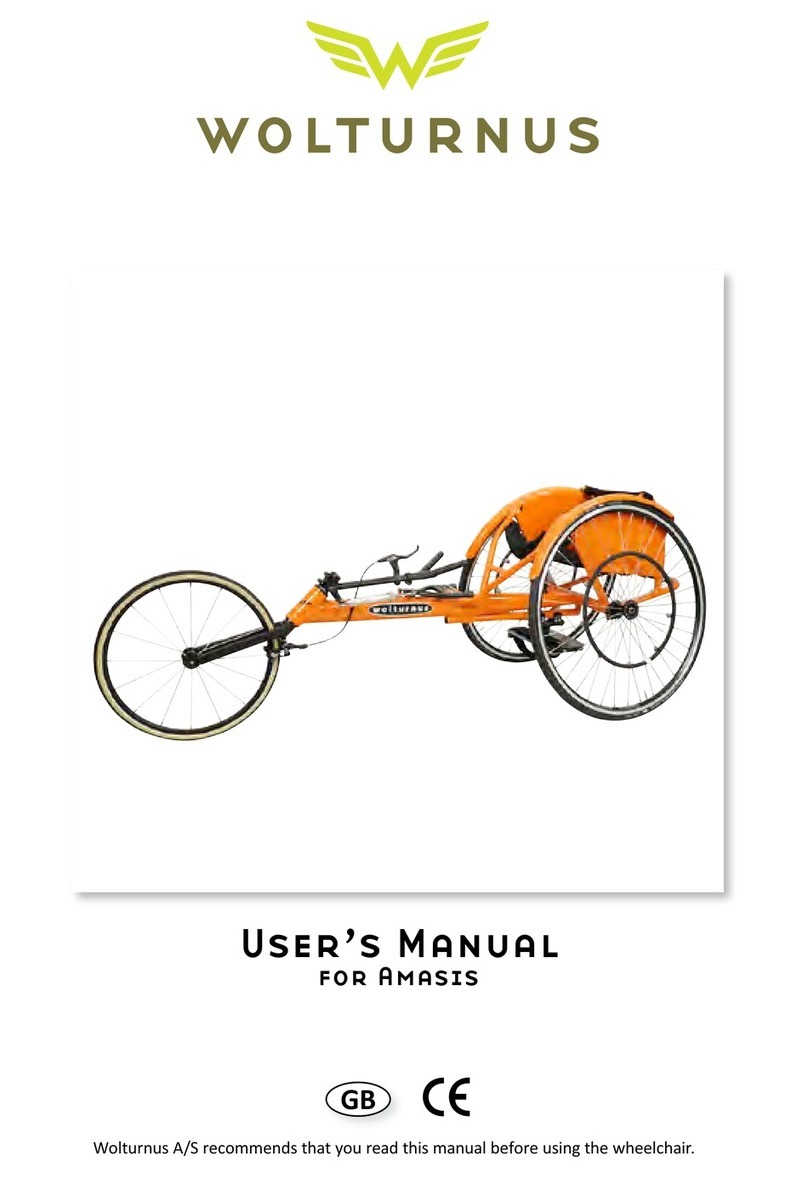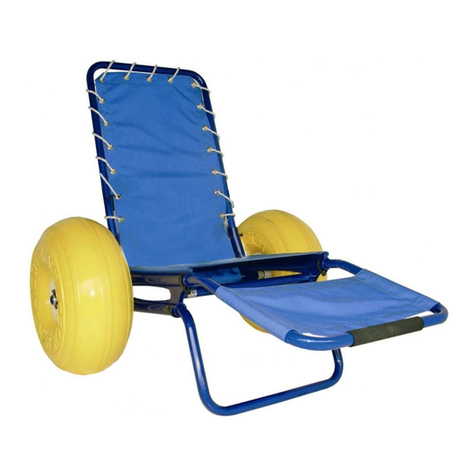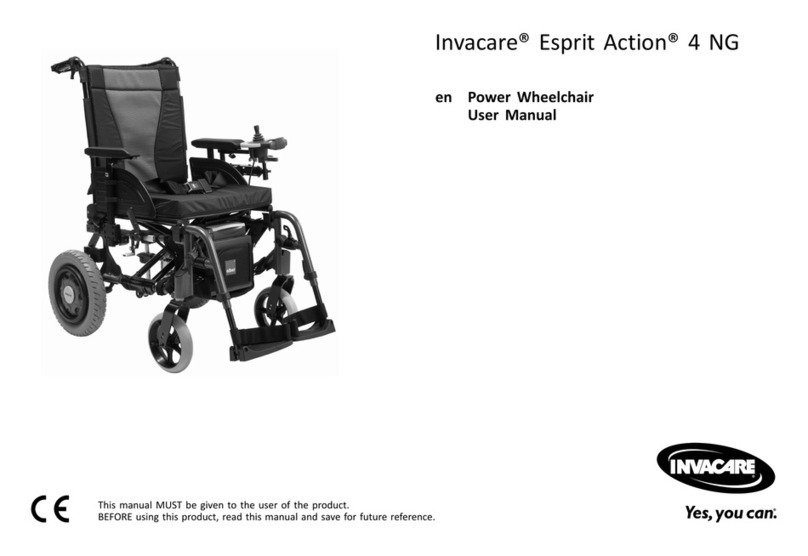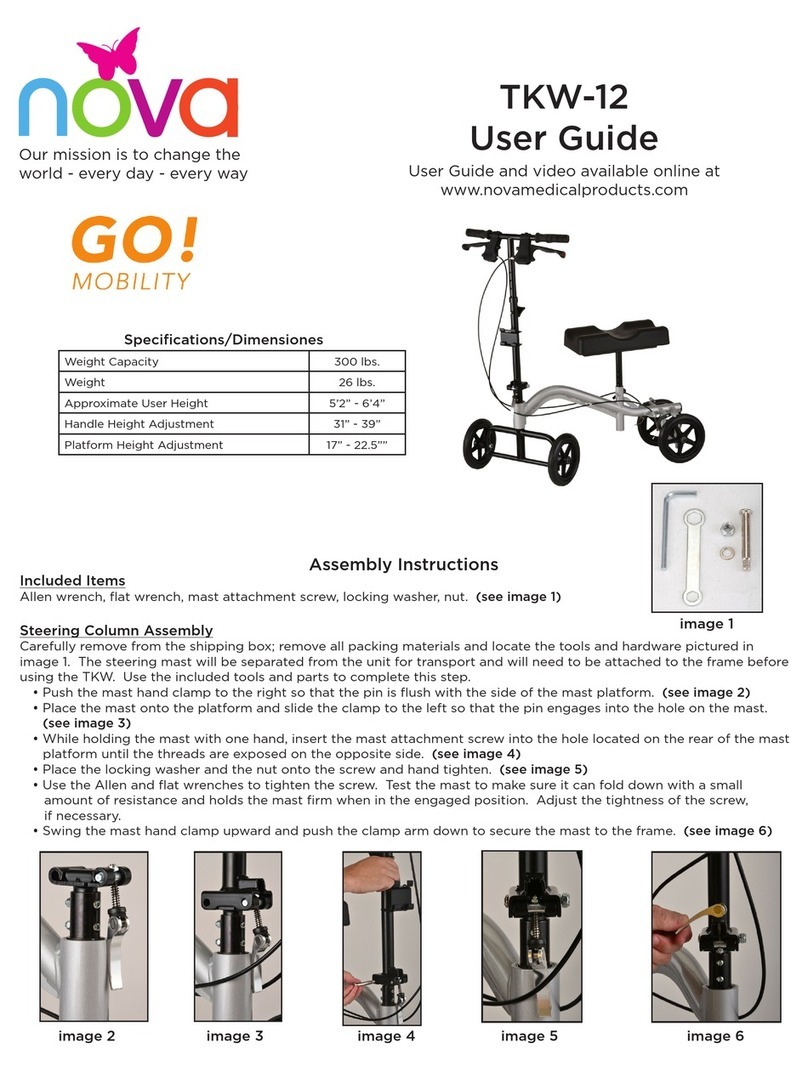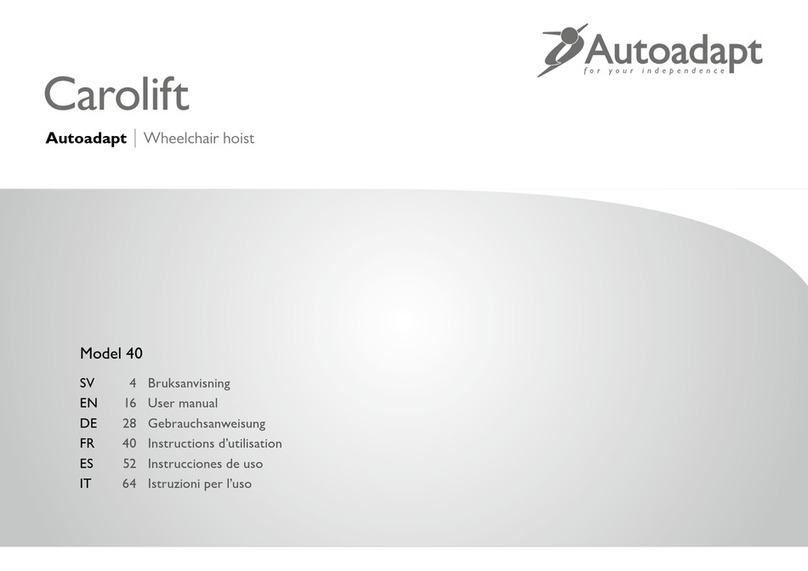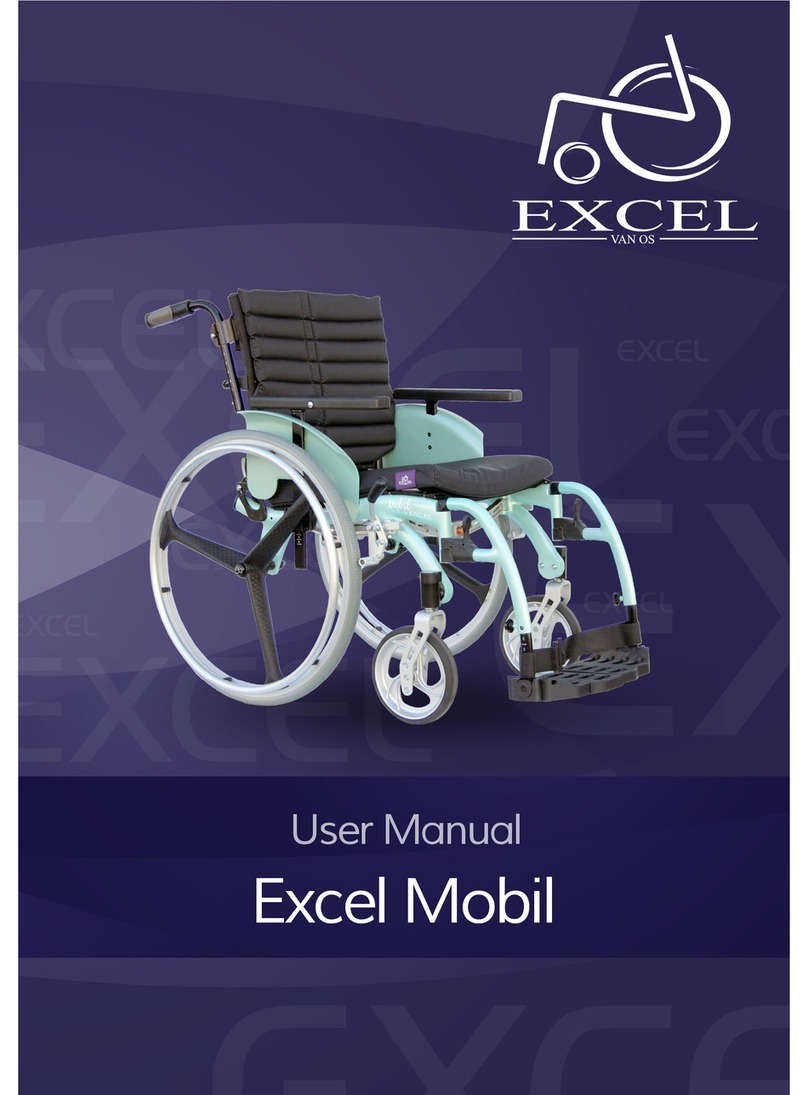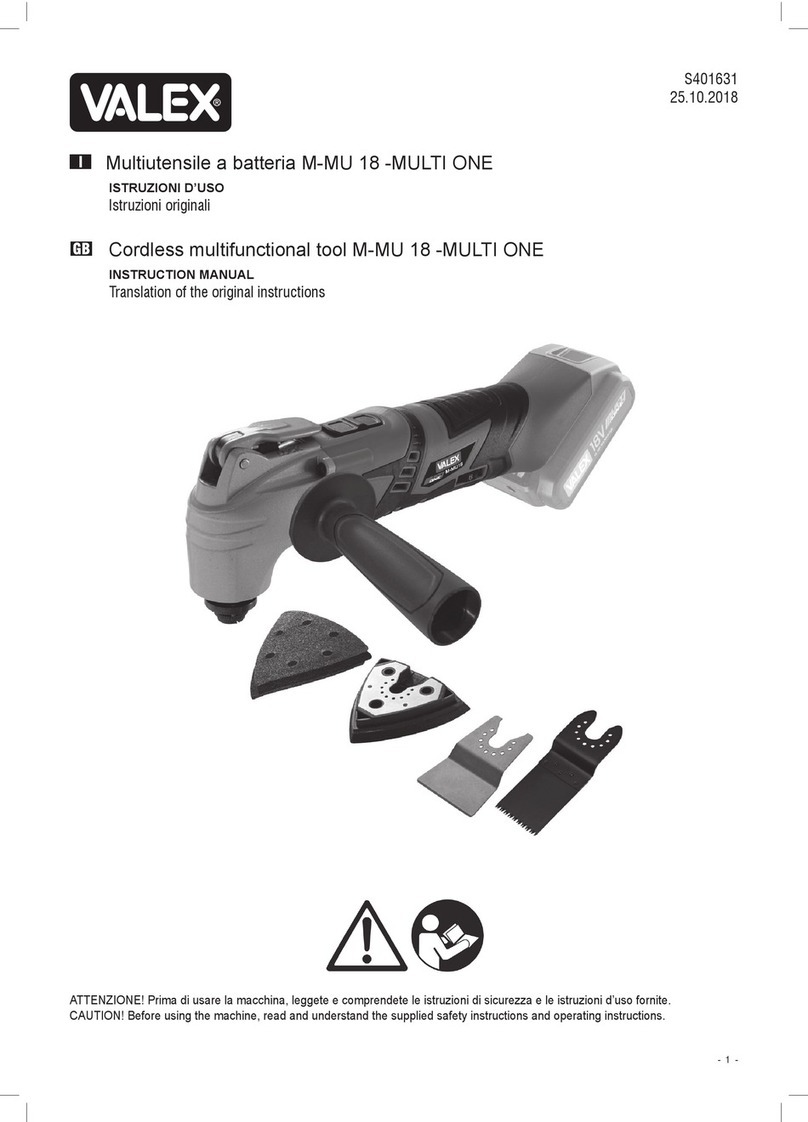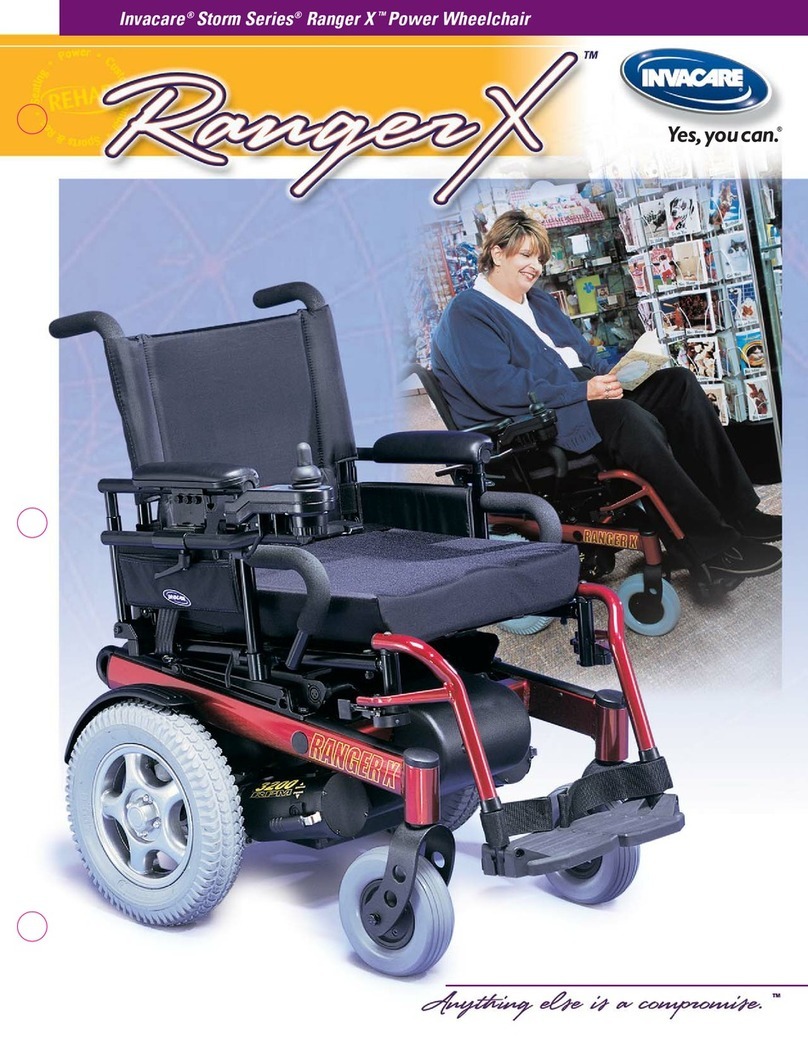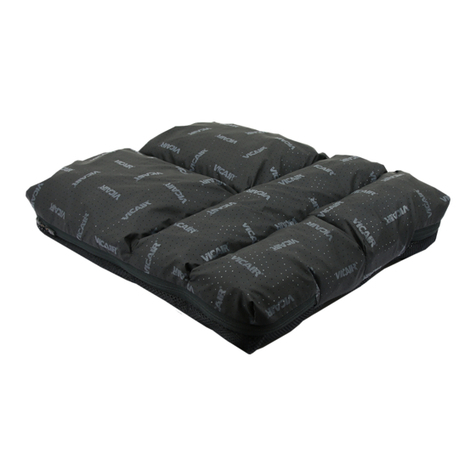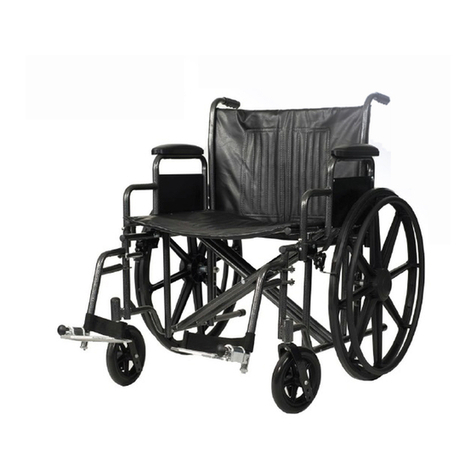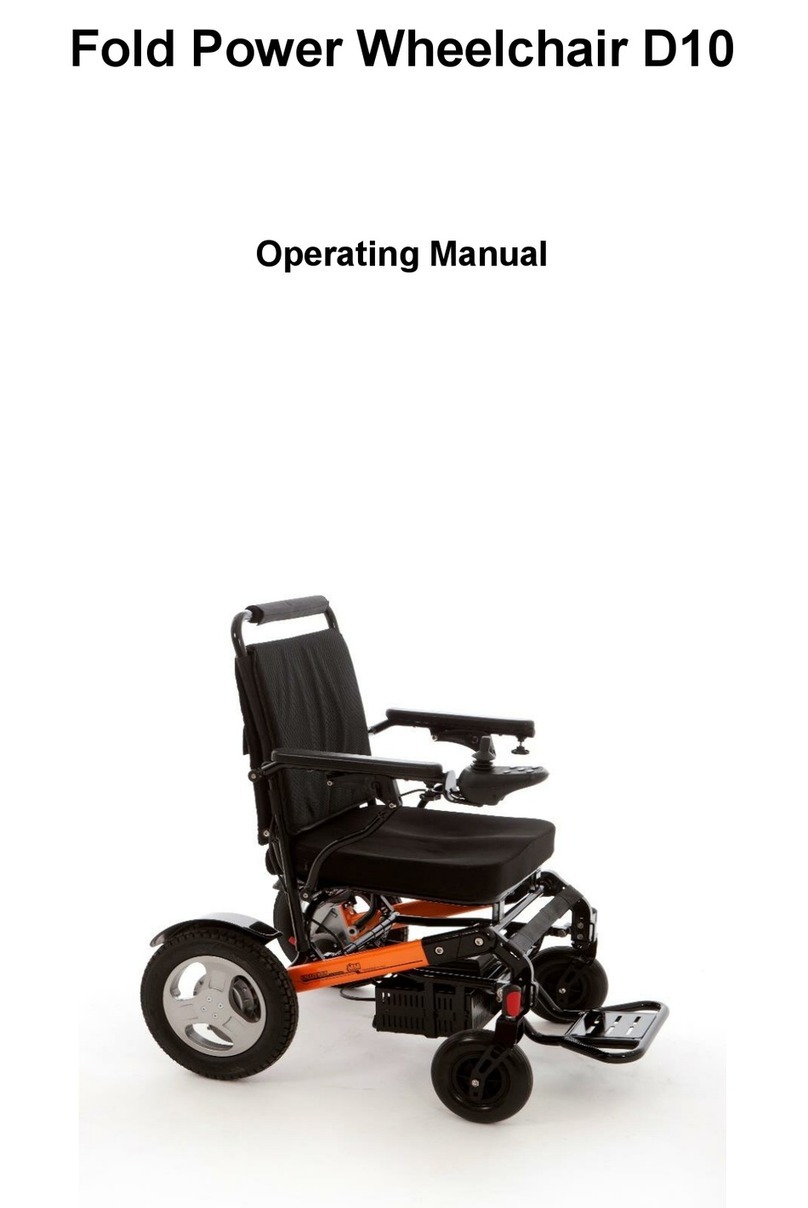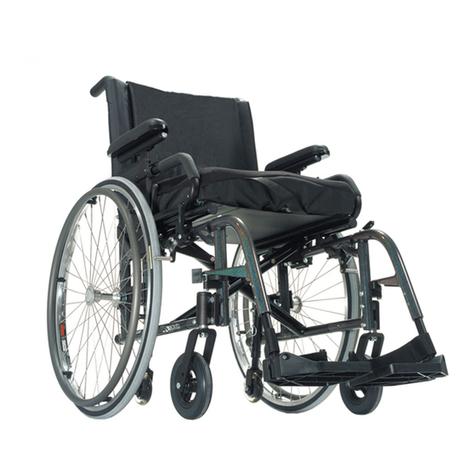
Wolturnus Acve Wheelchair User’s Manual 2018 Wolturnus Acve Wheelchair User’s Manual 2018Acve Wheelchair Acve Wheelchair
Introducon
Introducon
1.3 Usage
The wheelchair’s modular design and versality make it suitable for users who have diculty walking or who
have a mobility handicap as a result of:
• Paralysis
• Loss of limbs (leg amputaon)
• Limb defects or deformies
• Damaged or defecve limbs
• Other illnesses
When adapng the wheelchair for the user, the following should be taken into account:
• Body height and weight (max. load 120-250 kg.)
• Physical and mental constuon
• Age
• Residenal circumstances
• Surroundings
1 Introducon
1.1 Foreword
This user manual provides users and helpers with essenal informaon about the design, funcons, use and
maintenance of the Wolturnus W5, Tukan, Gitano, Dalton, Dance wheelchair for adults, throughout the rest of
this manual these models will be described by the wheelchair. The manual contains the informaon necessary
to ensure safe use of the wheelchair. It contains troubleshoong informaon with, where applicable, soluons.
The wheelchair is an easy-propulsion acve wheelchair in high-strength aluminium. The wheelchair design
makes it as easy as possible for the user to operate the chair independently. The wheelchair is custom-built
according to the user’s instrucons. This ensures that the wheelchair precisely meets the individual user’s re-
quirements. Because the back can be folded and both the rear wheel and sideguards removed, the wheelchair
is easy to transport, including in ordinary cars. The wheelchair is ideal for users who want to have an acve
daily life, indoors and outdoors. The amount of adjustability may vary depending on the model and ordered
features.
The instrucons in this manual are essenal for safe and correct use of the wheelchair. Before starng to use
it, it is important that both the user and helper read these instrucons carefully paying special aenon to the
safety instrucons. The informaon provided ensures that the user gets the opmum advantage of the wheel-
chair’s features and funcons. Visually impaired users may obtain this informaon by having another person
read for them. Furthermore, the manual is available on www.wolturnus.dk/en/ where it is possible to enlarge
the text or have the text read up by a suitable computer program. Keep this user manual throughout the lifeme
of the wheelchair: It contains informaon that can answer future quesons and it contains guidelines for adju-
sng and adapng the chair.
This user manual has been produced in accordance with DS EN82079-1 ’Preparaon of instrucons for use -
Structuring, content and presentaon’. It is divided into secons. The heading on each page contains the tle of
the overall secon. The foot of each page displays the page number, year, and site of origin of the user manual.
It also includes the wheelchair model.
1.2. Intended use
The wheelchair is designed for individual mobility, indoors and outdoors. It is only suitable for people who are
unable to walk or have a mobility problem, but have unimpaired sight and cognion. Only equipment that is
specied in this user manual may be used with this wheelchair, and vice versa.
Wolturnus A/S does not guarantee this product if it is used with accessories or products from manufacturers
other than those specied as part of the modular system.
Use of the wheelchair for any purpose other than the aforemenoned will be considered incorrect. In the event
of incorrect use, the user - i.e. not the manufacturer - is liable for resulng damage to persons or property.
The wheelchair may only be used by pracsed users. For personal protecon and in order to ensure that the
wheelchair is used safely and correctly, it is a requirement that the user and helpers receive training and instruc-
on.
The wheelchair can only be used safely if it is used correctly in accordance with the informaon provided in this
user manual. The user bears nal responsibility for accident-free use.
The wheelchair service and repairs may only be
carried out by authorised personnel trained by
Wolturnus A/S. In the event of problems, please
contact Wolturnus A/S
INFORMATION
Risk of injury with incorrect use
To avoid the risk of geng ngers caught in the
rear wheel spokes or wheel locks, and to avoid
the risk of the chair pping, children should not
play with the wheelchair.
WARNING!
1.4 Service
In the event of quesons or problems that cannot be resolved using this user manual, please contact Wolturnus
A/S customer service at (+45) 9671 7170.
Wolturnus A/S strives to provide full assistance to its customers in every respect and thus to ensure total sas-
facon with the wheelchair. Wolturnus A/S contact informaon and a list of service locaons can be found in
secon 13.
In the event that the wheelchair requires repairs at Wolturnus A/S for an extended period of me, a courtesy
wheelchair can be borrowed for that period. Please contact Wolturnus A/S for further informaon.
1.5 CE compliance
The wheelchair meets the requirements of European Commission Direcve 93/42/EEC for medical devices. The
product is classied as Class 1 on the basis of the classicaon criteria for medical devices in accordance with lX
of the direcve. Wolturnus A/S has therefore, as manufacturer with sole liability, made a declaraon of confor-
mity in accordance with appendix Vll of the direcve.
1.6 Liability
Wolturnus A/S’ warranty applies only if the product is used in accordance with the specied circumstances,
purpose and instrucons. The frame is covered by a 5-year warranty. Other parts manufactured by Wolturnus
4 5
